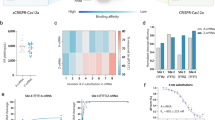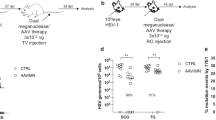Abstract
Recent studies1 have demonstrated that eukaryotic simian virus 40 (SV40) genes carried in a bacterial plasmid can be directly transferred into mammalian cells in culture; after polyethylene glycol (PEG)-induced fusion with bacterial protoplasts, a fraction of the recipient cells yielded infectious virus. We have now investigated whether this procedure can also produce stable transformants. We report here that the efficiency of focus formation after transfer of either polyoma virus or SV40 early genes was at least equal to that observed after infection with virions. At high ratios of bacteria/recipient cells, all the cells were observed to express the early viral proteins 48 h after fusion. In optimal conditions, transfer by fusion thus seems to be 10- to 20-fold more efficient than DNA transfection by the Ca2+ co-precipitation technique2 for the introduction of foreign genes into eukaryotic recipients.
This is a preview of subscription content, access via your institution
Access options
Subscribe to this journal
Receive 51 print issues and online access
$199.00 per year
only $3.90 per issue
Buy this article
- Purchase on Springer Link
- Instant access to full article PDF
Prices may be subject to local taxes which are calculated during checkout
Similar content being viewed by others
References
Schaffner, W. Proc. natn. Acad. Sci. U.S.A. 77, 2163–2167 (1980).
Graham, F. L. & Van der Eb, A. J. Virology 52, 456–467 (1973).
Murry, N. E., Brammar, W. J. & Murray, K. Molec. gen. Genet. 150, 53–61 (1976).
Seif, R. & Cuzin, F. J. Virol. 24, 721–728 (1977).
Israel, M. A., Simmons, D. T., Hourihan, S. L., Rowe, W. P. & Martin, M. A. Proc. natn. Acad. Sci. U.S.A. 76, 3713–3716 (1980).
Hassell, J. A., Topp, W. C., Rifkin, D. B. & Moreau, P. E. Proc. natn. Acad. Sci. U.S.A. 77, 3978–3982 (1980).
Novak, U., Dilworth, S. M. & Griffin, B. E. Proc. natn. Acad. Sci. U.S.A. 77, 3278–3282 (1980).
Benjamin, T. L., Carmichael, G. G. & Schaffhausen, B. S. Cold Spring Harb. Symp. quant. Biol. 44, 263–270 (1980).
Wigler, M. et al. Cell 16, 777–785 (1979).
Benoist, C. & Chambon, P. Nature 290, 304–310 (1981).
Soeda, E., Arrand, J. R., Smolar, N., Walsh, J. E. & Griffin, B. E. Nature 283, 445–453 (1980).
Eckhart, W. Virology 38, 120–125 (1969).
Author information
Authors and Affiliations
Rights and permissions
About this article
Cite this article
Rassoulzadegan, M., Binetruy, B. & Cuzin, F. High frequency of gene transfer after fusion between bacteria and eukaryotic cells. Nature 295, 257–259 (1982). https://doi.org/10.1038/295257a0
Received:
Accepted:
Issue Date:
DOI: https://doi.org/10.1038/295257a0
This article is cited by
-
Generation of high-yield rapamycin-producing strains through protoplasts-related techniques
Applied Microbiology and Biotechnology (2009)
-
Gene transfer by protoplast fusion: Expression cloning of rare gene products in mammalian cells
Journal of Tissue Culture Methods (1993)
-
Factors influencing efficiency and reproducibility of polybrene-assisted gene transfer
Somatic Cell and Molecular Genetics (1988)
-
Complementation of metabolic defect in phosphoglycerate kinase (PGK)-deficient line of Chinese hamster ovary cells by introduction of humanPGK cDNA
Somatic Cell and Molecular Genetics (1988)
-
Fusion between human and Drosophila melanogaster cells induced by polyethylene glycol
Genetica (1987)
Comments
By submitting a comment you agree to abide by our Terms and Community Guidelines. If you find something abusive or that does not comply with our terms or guidelines please flag it as inappropriate.



